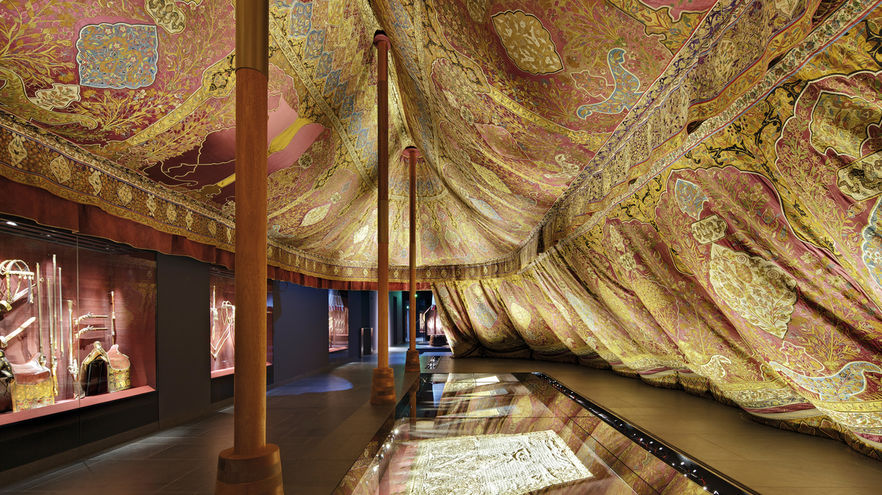beim Kloster St. Marienberg in Helmstedt

We are one of the few privately-owned centres for textile conservation in Germany and Europe. Our expertise is recognised among experts, just as the list of our references is extraordinary. We merged with the parament workshop in 1993 and secure textile treasures by using different techniques while maintaining museum-like standards. In accordance with our clients' wishes, we conserve, preserve and reconstruct.
The conservation of textile cultural goods is limited to measures which will preserve the objects in question. A distinction is made between active and preventive conservation. A professional documentation takes place in both cases.
Our work is based on accredited principles of quality and almost always refrains from supplementing missing original content. It is our aim to preserve the origin of an object as faithfully as possible.
Supplements to or changes of an object are always implemented in a reversible way. Furthermore, it is important to us to preserve the more often than not chequered history of an object. If it is so desired, we also take care of the objects' professional presentation. Furthermore, we offer the service of monitoring the preserved textiles in appointed intervals and examine them for new damage.
Measures of conservation could and should take place, if this leads to a better understanding – the technical term being legibility – of the object. However, any kind of conservation is preceded by a thorough analysis as well as basic securing measures. All steps taken are documented in writing and through photographs.
Preservation includes prophylactic measures which focus on the surroundings of the object. This serves the purpose of avoiding damages without actually impairing the object. The client's on-site conditions concerning storage and presentation of the textile objects are optimised for the further keeping of the originals. In addition, we offer professional support concerning pest control, climate control and wrapping as well as realising loans.
Active conservation consists of direct intervention concerning the object. Firstly, using scientific methods, an analysis of the current state is drawn up. Following this, the actual conservation measures are undertaken, depending on the damage and in consultation with the owner. This may range from cleaning and maintenance to a possible pest control to reversible sowing and adhesive security measures.
Reconstruction of a textile object aims at analysing and, if necessary, restoring it. In order for this to happen, all existing information concerning the original needs to be obtained through fragments, written sources, images and, in some isolated cases, by interviewing contemporary witnesses. Reconstruction can be realised as a simple image as well as a textile adaptation which is identical to the original.
A replica is a faithful copy (duplicate) of an already existing textile object. The exact concordance with the original includes both the material and the manufacturing techniques. Replicas are used to replace precious original textiles in exhibitions, if the conditions of the original do not allow for transport or presentation or if it is a unique and very valuable object.
It happens quite often that cases of damage which are pertinent to insurances take place. When this is the case, an assessment of the damage has to be carried out. Following this, a report on the damage is drawn up. This consists of a detailed description of the damage, an analysis of the cause of damage, an appraisal of the impact of this damage on the textile object (damage quality), the quantification of the resulting impairment as well as the estimation of cost for the necessary conservation.
Both public-domain and private owners are well advised to take stock of their collections of textile valuables, even if it should be just a solitaire. During an inventory, all object-related relevant qualities and data are recorded, documented, monitored on a regular basis and, if necessary, supplemented or updated.
The storage (depositing) of textile objects requires professional expertise and knowledge based on preventive conservation. Firstly, this concerns the rooms and storage containers. Closets, fabrics, wallpaper, floors and paints may leak toxic substances. Furthermore, unfavourable climatic and lighting conditions may accelerate normal aging and degradation processes of textile materials. All of the named aspects have to be considered when preparing for an exhibition or other forms of presentation, including the planning of the necessary transports.